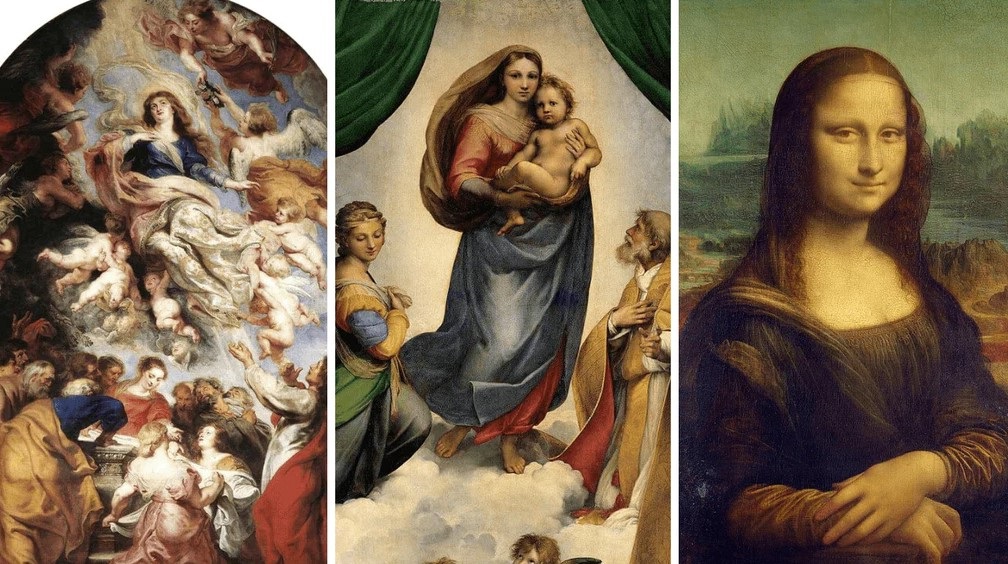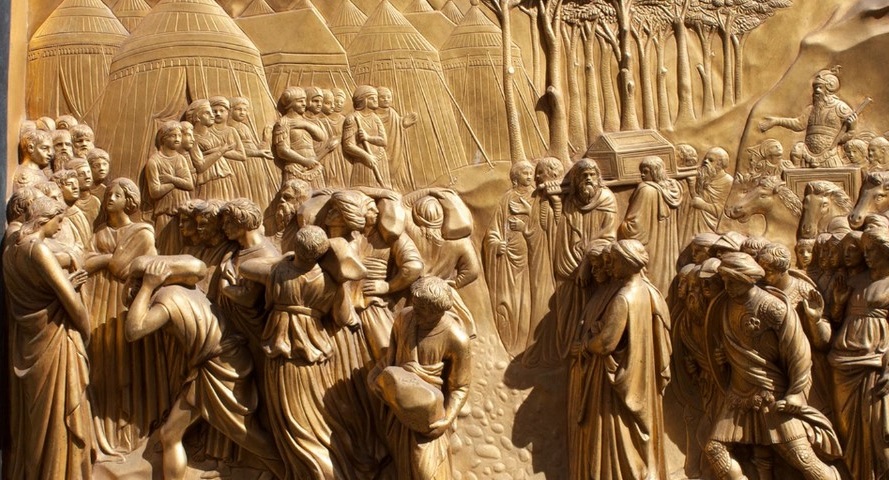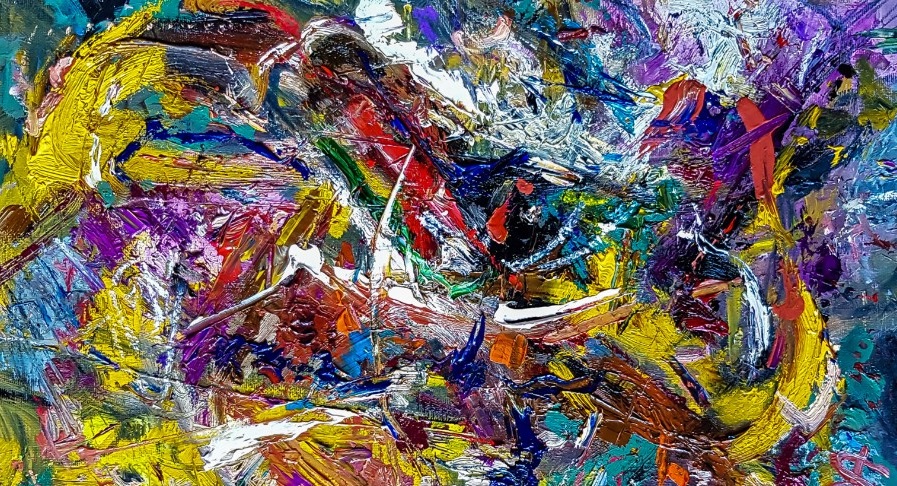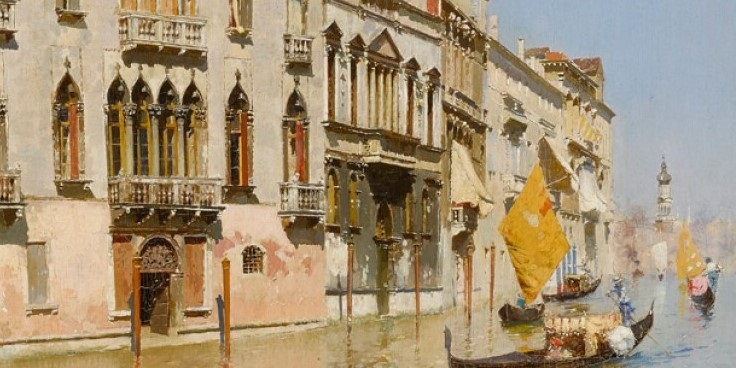
A. Definition of European art
famous european art, European art encompasses the wide array of artistic expressions originating from the geographical region of Europe. It includes various forms such as painting, sculpture, architecture, literature, music, and more, spanning different time periods and cultural influences.
B. Significance of European art on the global stage
European art has played a pivotal role in shaping the course of global artistic development. Its influence has been profound, impacting artistic movements, techniques, and styles across continents. Through its innovation, European art has contributed to the enrichment and evolution of artistic traditions worldwide.
C. Overview of the diversity and richness of European art history
European art history is characterized by its immense diversity and richness, reflecting the multifaceted cultures, histories, and experiences of the continent. From the classical antiquity of ancient Greece and Rome to the vibrant Renaissance, the Baroque extravagance, the Romanticism of the 19th century, to the avant-garde movements of the 20th century, European art history is marked by dynamic shifts, experimentation, and artistic revolutions.
Table of Contents
Renaissance Masterpieces

A. Overview of the Renaissance period in Europe
The Renaissance, a cultural movement that emerged in Europe during the 14th to 17th centuries, marked a period of renewed interest in classical learning, humanism, and artistic innovation. It witnessed remarkable advancements in various fields, including art, science, literature, and philosophy.
B. Leonardo da Vinci and his iconic works (e.g., Mona Lisa, The Last Supper)
Leonardo da Vinci, a quintessential Renaissance polymath, is celebrated for his groundbreaking contributions to art and science. His masterpieces, such as the enigmatic “Mona Lisa,” renowned for its mysterious smile and intricate technique, and “The Last Supper,” a monumental fresco capturing the dramatic moment of Christ’s final meal with his disciples, exemplify his genius and artistic mastery.
C. Michelangelo and his contributions to art (e.g., Sistine Chapel ceiling, David)
Michelangelo Buonarroti, another luminary of the Renaissance, left an indelible mark on the art world with his unparalleled talent and vision. His awe-inspiring frescoes adorning the ceiling of the Sistine Chapel, depicting scenes from Genesis, stand as a testament to his virtuosity and creativity. Additionally, his marble masterpiece “David,” a sculptural marvel portraying the biblical hero in a moment of contemplation and strength, exemplifies his skill in capturing human anatomy and emotion.
D. Raphael and his renowned paintings (e.g., The School of Athens)
Raphael Sanzio, known for his harmonious compositions and sublime aesthetic, emerged as one of the preeminent painters of the High Renaissance. His masterpiece “The School of Athens,” a fresco adorning the Vatican’s Apostolic Palace, is a visual embodiment of Renaissance ideals, portraying a gathering of great philosophers and thinkers from antiquity. Raphael’s meticulous attention to detail, balanced compositions, and graceful figures epitomize the spirit of Renaissance humanism and artistic excellence.
Baroque Era Highlights
A. Introduction to the Baroque art movement
The Baroque art movement emerged in Europe during the late 16th century, characterized by its dramatic theatricality, emotional intensity, and elaborate ornamentation. It represented a shift from the harmony and restraint of the Renaissance to a more dynamic, extravagant style that aimed to evoke strong emotional responses from viewers.
B. Caravaggio and his dramatic realism (e.g., The Calling of Saint Matthew)
Caravaggio, an Italian Baroque painter, is renowned for his revolutionary approach to realism and dramatic lighting. His masterpiece “The Calling of Saint Matthew” exemplifies his signature chiaroscuro technique, which contrasts light and shadow to heighten the drama and intensity of the scene. Caravaggio’s gritty portrayal of everyday life and religious subjects challenged conventional artistic norms and had a profound influence on subsequent generations of artists.
C. Rembrandt and his mastery of light and shadow (e.g., The Night Watch)
Rembrandt van Rijn, a Dutch master of the Baroque period, is celebrated for his exceptional skill in capturing the effects of light and shadow, known as chiaroscuro, to imbue his paintings with depth and emotion. “The Night Watch,” one of his most famous works, showcases his ability to create a dynamic composition filled with movement and drama, as well as his mastery of psychological insight into his subjects.
D. Peter Paul Rubens and his grandiose style (e.g., The Descent from the Cross)
Peter Paul Rubens, a Flemish Baroque artist, is renowned for his dynamic compositions, lush colors, and grandiose style. “The Descent from the Cross” is a prime example of Rubens’ mastery, depicting the dramatic moment of Christ’s removal from the cross with a sense of emotional intensity and physical power. His energetic brushwork and monumental figures epitomize the Baroque emphasis on drama and spectacle.
Impressionism and Post-Impressionism
A. Transition from traditional to modern art movements
Impressionism and Post-Impressionism emerged in the late 19th century as a reaction against the constraints of academic art and a desire to capture fleeting moments of light, color, and emotion. These movements marked a significant departure from traditional artistic conventions, embracing innovative techniques and subjective interpretations of reality.
B. Claude Monet and his impressionist landscapes (e.g., Water Lilies series)
Claude Monet, a pioneering figure of Impressionism, is renowned for his vibrant plein air landscapes and atmospheric effects. His “Water Lilies” series, inspired by his garden in Giverny, France, captures the ephemeral beauty of light reflecting on water with loose brushstrokes and a shimmering palette. Monet’s emphasis on capturing fleeting impressions and sensations revolutionized the way artists approached nature and light.
C. Vincent van Gogh and his expressive style (e.g., Starry Night)
Vincent van Gogh, a Dutch Post-Impressionist painter, is celebrated for his bold colors, expressive brushwork, and emotive landscapes. “Starry Night,” one of his most iconic works, depicts the night sky over Saint-Rémy-de-Provence with swirling clouds and pulsating stars, conveying a sense of cosmic wonder and emotional turbulence. Van Gogh’s deeply personal and expressive style paved the way for modern artistic expression.
D. Paul Cézanne and his contributions to post-impressionism (e.g., Mont Sainte-Victoire series)
Paul Cézanne, a French Post-Impressionist painter, is renowned for his innovative approach to form and structure, laying the groundwork for subsequent movements such as Cubism. His “Mont Sainte-Victoire” series explores the motif of the mountain near his home in Provence, utilizing geometric shapes and planes to deconstruct the landscape into its essential forms. Cézanne’s emphasis on underlying structure and spatial relationships challenged traditional notions of representation and paved the way for modern abstraction.
Surrealism and Dadaism
A. Emergence of avant-garde movements in Europe
Avant-garde movements like Surrealism and Dadaism emerged in Europe in the early 20th century as responses to the disillusionment and upheaval caused by World War I. These movements sought to challenge traditional artistic conventions and explore the irrational, subconscious, and absurd aspects of human experience.
B. Salvador Dalí and his surrealistic visions (e.g., The Persistence of Memory)
Salvador Dalí, a Spanish Surrealist painter, is known for his dreamlike imagery and eccentric personality. “The Persistence of Memory,” one of his most famous works, features melting clocks draped over a desolate landscape, symbolizing the fluidity of time and the subconscious mind. Dalí’s surrealistic visions evoke a sense of wonder and provoke viewers to question reality and perception.
C. René Magritte and his thought-provoking imagery (e.g., The Son of Man)
René Magritte, a Belgian Surrealist artist, is celebrated for his enigmatic and thought-provoking imagery that challenges conventional notions of representation and reality. “The Son of Man,” depicting a man in a bowler hat with an apple obscuring his face, explores themes of identity, concealment, and mystery. Magritte’s use of juxtaposition and visual paradoxes invites viewers to contemplate the hidden meanings beneath the surface of everyday objects and situations.
D. Marcel Duchamp and his revolutionary approach (e.g., Fountain)
Marcel Duchamp, a French-American artist associated with Dadaism, is renowned for his radical redefinition of art and its meaning. “Fountain,” a readymade sculpture consisting of a urinal signed with the pseudonym “R. Mutt,” provocatively challenges traditional notions of artistic craftsmanship and aesthetic value. Duchamp’s embrace of the mundane and the absurd revolutionized the concept of art, paving the way for conceptual art and challenging the authority of the art establishment.
Abstract Expressionism

A. Post-World War II artistic developments
Well-known European art, Abstract Expressionism emerged in the United States in the aftermath of World War II, reflecting the existential angst and emotional turmoil of the era. Characterized by spontaneous gestures, gestural brushwork, and a focus on the artist’s inner world, Abstract Expressionism represented a break from representational art and a shift towards abstraction and subjective expression.
B. Jackson Pollock and his action painting technique (e.g., Number 1, 1950)
Jackson Pollock, a leading figure of Abstract Expressionism, developed the innovative technique of “action painting,” which involved dripping, pouring, and splattering paint onto canvas in a spontaneous and gestural manner. “Number 1, 1950 (Lavender Mist)” exemplifies Pollock’s dynamic and frenetic style, capturing the energy and movement of his creative process. Pollock’s emphasis on process and gesture transformed the act of painting into a performative and expressive act.
C. Mark Rothko and his color field paintings (e.g., No. 61 (Rust and Blue))
Mark Rothko, another prominent Abstract Expressionist painter, is known for his luminous color field paintings that evoke deep emotional and spiritual responses in viewers. “No. 61 (Rust and Blue)” exemplifies Rothko’s signature style, featuring expansive fields of color that seem to envelop the viewer in a transcendent experience. Rothko’s use of color and form to convey universal emotions and existential themes continues to resonate with audiences today.
D. Piet Mondrian and his geometric abstraction (e.g., Composition II in Red, Blue, and Yellow)
Piet Mondrian, a Dutch painter associated with the De Stijl movement, pioneered geometric abstraction, reducing form and color to their essential components of horizontal and vertical lines and primary colors. “Composition II in Red, Blue, and Yellow” exemplifies Mondrian’s commitment to purity and harmony, with its grid-like composition and bold primary colors. Mondrian’s geometric abstraction influenced generations of artists and continues to be celebrated for its clarity, simplicity, and spiritual resonance.
Contemporary European Art Scene

A. Overview of current trends and movements
Notable European art, The contemporary European art scene is characterized by a diverse array of trends and movements reflecting the dynamic cultural landscape of the continent. From conceptual art to digital media, artists explore themes ranging from identity and globalization to environmental concerns and social justice. Collaborative and interdisciplinary practices, as well as a focus on sustainability and inclusivity, are also prominent in today’s European art scene.
B. Anish Kapoor and his monumental sculptures (e.g., Cloud Gate)
Anish Kapoor, a British-Indian sculptor, is renowned for his monumental and often immersive sculptures that engage with space, form, and perception. “Cloud Gate,” located in Chicago’s Millennium Park, is one of his most iconic works, featuring a polished stainless steel surface that reflects and distorts the surrounding skyline and viewers’ reflections. Kapoor’s sculptures evoke a sense of wonder and invite contemplation of the relationship between art, architecture, and the environment.
C. Damien Hirst and his provocative installations (e.g., The Physical Impossibility of Death in the Mind of Someone Living)
Damien Hirst, a British artist known for his controversial and often provocative works, explores themes of mortality, consumerism, and the nature of art itself. “The Physical Impossibility of Death in the Mind of Someone Living,” a preserved shark in formaldehyde, is one of his most infamous installations, challenging viewers to confront their own mortality and the commodification of art. Hirst’s bold and confrontational approach has made him a polarizing figure in the contemporary art world.
D. Banksy and his anonymous street art (e.g., Girl with a Balloon)
Banksy, an anonymous British street artist, is celebrated for his politically charged and often satirical stencil graffiti works that appear unexpectedly in public spaces. “Girl with a Balloon,” one of his most iconic pieces, features a young girl reaching for a heart-shaped balloon, symbolizing innocence and hope. Banksy’s art challenges societal norms and power structures while engaging with issues such as war, capitalism, and the refugee crisis.
Art Institutions and Museums
A. Highlighting prominent art museums across Europe (e.g., Louvre, Uffizi Gallery, Prado Museum)
Europe is home to numerous world-renowned art museums showcasing masterpieces from antiquity to the present day. The Louvre in Paris, the Uffizi Gallery in Florence, and the Prado Museum in Madrid are just a few examples of institutions housing priceless collections of European art, attracting millions of visitors each year.
B. Role of these institutions in preserving and showcasing European art heritage
Art museums play a crucial role in preserving and showcasing Europe’s rich artistic heritage, providing access to cultural treasures and fostering appreciation for art across generations. Through exhibitions, educational programs, and conservation efforts, these institutions contribute to the preservation and dissemination of European art history for future audiences.
C. Impact of art tourism on these institutions and their surrounding regions
Art tourism has a significant impact on the cultural and economic vitality of regions hosting prominent art museums. Cities like Paris, Florence, and Madrid benefit from the influx of tourists drawn to their world-class art collections, stimulating local economies through spending on accommodations, dining, and cultural experiences. However, managing the challenges of overtourism and balancing preservation with accessibility remains an ongoing concern for these institutions.
Influences and Legacy
A. Exploration of European art’s influence on global artistic movements
European art has exerted a profound influence on global artistic movements, shaping aesthetic sensibilities, techniques, and conceptual frameworks across continents. From the Renaissance to contemporary art, European artists and movements have inspired and influenced generations of creators worldwide, contributing to the diversity and richness of global artistic expression.
B. Legacy of European art on contemporary artists and cultural landscapes worldwide
The legacy of European art continues to resonate in the work of contemporary artists and the cultural landscapes of regions far beyond Europe. Artists draw inspiration from European masters, reinterpreting traditional motifs and techniques within the context of their own cultural experiences and contemporary concerns. Moreover, European art institutions serve as hubs for international dialogue and exchange, fostering collaboration and cross-cultural understanding in the global art community.
C. Reflection on the enduring significance of European art throughout history
European art’s enduring significance lies in its ability to transcend temporal and geographic boundaries, speaking to universal themes and human experiences across time. From the classical ideals of ancient Greece to the avant-garde experiments of the 20th century, European art reflects the complexities of human existence, inspiring wonder, introspection, and dialogue across generations and cultures. As custodians of this rich cultural heritage, we are entrusted with the responsibility to preserve, interpret, and celebrate the legacy of European art for future generations.
Sure, here’s the breakdown table, conclusion, and 10 FAQs with their answers based on the article above:
Breakdown Table:
| Section | Topics Covered |
| I. Introduction | Definition of European art, Significance of European art on the global stage, Overview of European art history |
| II. Renaissance Masterpieces | Overview of Renaissance, Leonardo da Vinci, Michelangelo, Raphael |
| III. Baroque Era Highlights | Introduction to Baroque art, Caravaggio, Rembrandt, Peter Paul Rubens |
| IV. Impressionism and Post-Impressionism | Transition to modern art, Monet, Van Gogh, Cézanne |
| V. Surrealism and Dadaism | Emergence of avant-garde, Dalí, Magritte, Duchamp |
| VI. Abstract Expressionism | Post-WWII developments, Pollock, Rothko, Mondrian |
| VII. Contemporary European Art Scene | Current trends, Anish Kapoor, Damien Hirst, Banksy |
| VIII. Art Institutions and Museums | Prominent museums, Role of museums, Impact of art tourism |
| IX. Influences and Legacy | Influence on global art, Legacy on contemporary art, Enduring significance |
Conclusion famous european art:
The famous european art scene is a vibrant tapestry of diverse movements, spanning from the Renaissance to contemporary times. Each era has brought forth groundbreaking artists who have shaped the course of art history and continue to inspire creators worldwide. From the masterpieces of da Vinci and Michelangelo to the provocative works of contemporary artists like Hirst and Banksy, European art reflects the ever-evolving cultural landscape of the continent. Art institutions and museums play a vital role in preserving this rich heritage and fostering appreciation for art across generations. As we reflect on the enduring significance of European art throughout history, we recognize its universal appeal and lasting impact on the global artistic community.
10 FAQs (Frequently Asked Questions) and Answers:
- What is European art? European art encompasses various forms of artistic expression originating from the geographical region of Europe, including painting, sculpture, architecture, literature, and music.
- Who are some prominent artists of the Renaissance? Prominent Renaissance artists include Leonardo da Vinci, Michelangelo, and Raphael, known for their masterpieces such as the Mona Lisa, the Sistine Chapel ceiling, and The School of Athens, respectively.
- What is the significance of Surrealism and Dadaism? Surrealism and Dadaism were avant-garde movements that emerged in Europe in the early 20th century, challenging traditional artistic norms and exploring themes of the irrational, subconscious, and absurd.
- Who is known for his color field paintings in Abstract Expressionism? Mark Rothko is known for his luminous color field paintings that evoke deep emotional and spiritual responses in viewers.
- What is the role of art museums in Europe? Art museums in Europe play a crucial role in preserving and showcasing the continent’s rich artistic heritage, providing access to cultural treasures and fostering appreciation for art across generations.
- Who is the artist behind the controversial installation “The Physical Impossibility of Death in the Mind of Someone Living”? Damien Hirst is the artist behind the controversial installation featuring a preserved shark in formaldehyde, challenging viewers to confront mortality and the nature of art.
- What is Anish Kapoor known for? Anish Kapoor is known for his monumental sculptures, such as “Cloud Gate,” which engage with space, form, and perception, inviting contemplation of the relationship between art and the environment.
- Who painted “Starry Night” and what style is it associated with? “Starry Night” was painted by Vincent van Gogh and is associated with Post-Impressionism, characterized by bold colors and expressive brushwork.
- What is the legacy of European art on contemporary artists? The legacy of European art continues to resonate in the work of contemporary artists worldwide, inspiring and influencing generations of creators with its timeless themes and aesthetic innovations.
- What is the enduring significance of European art throughout history? European art’s enduring significance lies in its ability to transcend temporal and geographic boundaries, speaking to universal themes and human experiences across time, inspiring wonder, introspection, and dialogue.


